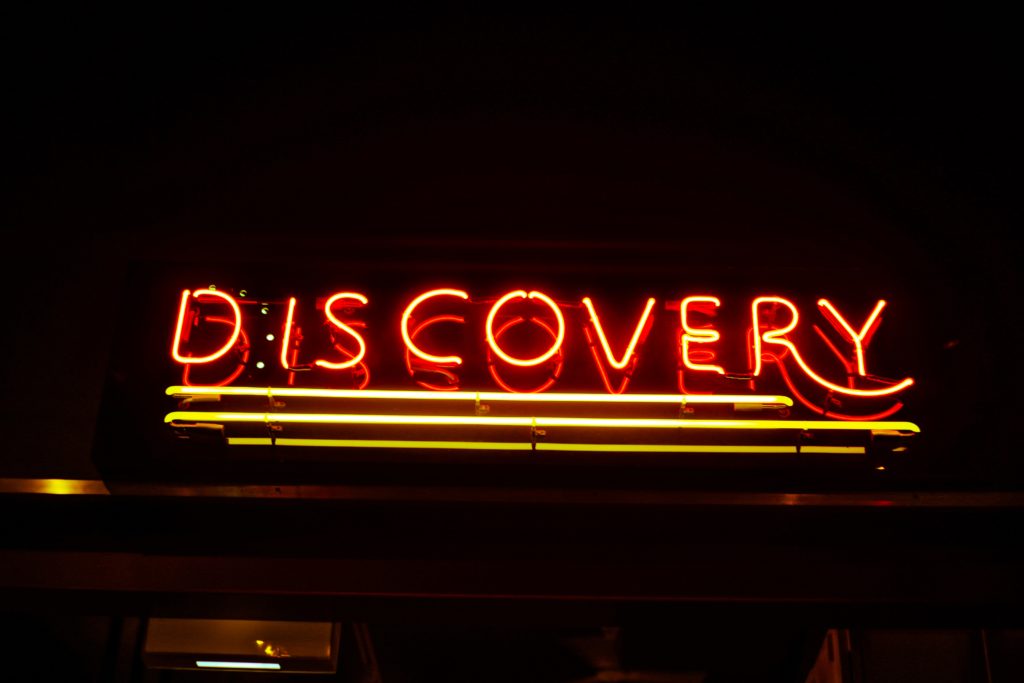The C-suite’s Guide to
Brand Transformation
Part 2: On the road to discovery
Get the ball rolling for brand transformation. Gathering information about your brand is the first step of a project. So, what methodologies should you choose? How far should your branding team go to materialise the correct answers and define a plan of action?
This article explores the common approaches you’ll find generating insights for your brand-building journey.
Project accepted. Brief written. It’s time to mobilise your branding agency team.
When embarking on a branding journey, the first step is the most important. At Structure, that first step is discovery – we spend a lot of time and effort finding out more about your brand and business, including your challenges, context, customers, competitors, products and more.
So, there are two questions that determine the shape of this first stage and therefore the likelihood of success of the overall project: How deep do we go? And how broad do we go?
Your outcomes are only as good as your inputs. So, the more you allow us access to (resources, stakeholders etc.), the better the business outcome. But reality dictates that a business can’t share everything (or involve everyone) with its branding partner. So how do you optimise to get the right insights? Tie your laces and consider the following…
Depth: start on the right foot
Many branding projects fall short because the right people aren’t included in the process to give you the correct information. You must travel high and low to find what you need within a company.
First place to look? Start at the top. Branding without leadership’s support is doomed. Leaders determine the direction of the business and drive organisational culture. When your brand reflects the vision of where the business is going, it creates more impact – and helps your leaders galvanise teams to go the same way.
Moreover, leadership is critical for gaining insights since they have the most comprehensive perspective of goings-on throughout the business and have the closest understanding of performance.
That said, consider involving and interviewing people at the metaphorical coalface of the business – the people selling the story to customers, managing the files and formats, and perfecting the product. You’ll find their experience and understanding of the business and brand may conflict with that of management and leadership, who may be less directly involved in the day-to-day.
Breadth: travel far for diverse insights
Leadership drives and makes decisions about your brand. Even though gaining input from every person can be impractical, securing buy-in across your organisation is critical, too.
Besides digging for facts and perspectives, the discovery stage considers the politics and emotions of people and how they can shape your brand. After all, they must live with and use it.
This is relevant to customers too. Advocates and detractors, longstanding and recent, can provide useful perspectives you may not have been aware of otherwise. And customers will stand to gain from helping your brand improve.
The answer? Your discovery should include and involve a diverse range of views to get a more representational and more accurate input – and therefore a more favourable brand outcome.
Consider your methodologies
There are plenty of research techniques to gain brand insights. Some agencies can do it all. Elsewhere, boutique studios offer their own unique specialisms for market research, audience insights and beyond.
Traditional qualitative and quantitative research techniques yield insights you couldn’t get otherwise – focus groups, surveys, journey mapping, etc. Even academic techniques such as ethnography or semiotics are increasingly common approaches that might be right for your business.

The path to discovery
Let’s pick up the pace. Your brand discovery balances both who to involve and what methods to use.
Here are five rough groupings for the different layers that comprise a thorough discovery session (they all helpfully begin with 'C').
- Conversation
Starting on the right foot and gaining diverse insights is most critical here. Most brand transformations build from critical conversations: what’s working, what’s not working, the brand’s history, the ins and outs of people’s roles, business strategy, how the product works, what the future holds–the sky’s the limit for questions and what could end up being relevant.
Most research conversations start with a guiding questionnaire. But going off script is common and usually teases out the good stuff. Your branding team will look for contradictions and consistencies in interviewee responses to get to the gold that supports your brand transformation.
Conversation approaches vary. One-on-ones, groups, and workshops unearth rich answers, test assumptions, and clarify understanding in different ways. Decide what’s the best use of time and engagement for your team.

- Competitors
Competitor analysis for branding is about evaluating other brands’ verbal and visual identities (how the brand talks and looks). From desktop research to fully immersing your team in competitors’ product samples, brand experiences, mystery shopping, retail safaris etc. – it’s important to know what’s being done out there. One good reason is so your brand doesn’t end up doing the same thing as someone else, which can weaken your credibility.
Your analysis reveals insights about the strengths and weaknesses of competitors, and what makes your own brand different or distinct. Commonly your competitors are industry players. But other types of brands deemed threatening to your bottom line or pertinent in your audience’s minds can be analysed to help discover change opportunities.
- Customers
This is where your customer interviews or other audience insights play their part in shaping your brand outcome. Some businesses like to work with personas – customer profiles that represent a generalised and idealised depiction of who interacts with your brand, directly or indirectly, to help your business generate revenue.
B2B and B2C brands alike have their own complex motives, challenges and conditions that influence how they buy and engage. Your customer insights help capture details that help inform the next stage of the brand-building journey.
- Category
No brand is an island. Every brand exists relative to another, whether that grouping is clear and well-defined, such as a specific industry (e.g., a niche IoT semiconductor start-up) or something more abstract (e.g., a personal financing solutions app).
Categories imply convention, a set of rules or trends that reinforce an individual’s belonging to that grouping. This works at a business level as well as a brand level. There are certain qualities your business must get right to be taken seriously or understood. Untangling what’s hygiene (must-haves to be in business or earn recognition) and what’s unique (what nobody else is doing that’s valuable and worth claiming) helps brand builders figure out how to drive change in your brand.
And that means knowing which rules to break and what must remain constant to get your brand ahead. This ties into…
- Culture
Technology evolves. People move. Politics intensify. The way we work, play, live, eat, and buy is all subject to change, macro, and micro, obvious and subtle, but all of which impact your organisation and its goals.
A killer branding team has a keen awareness and understanding of shifts in culture, the key trends relevant to the brand and where the opportunity lies.
Knowing about broader changes in behaviour and activity in the wider world means your branding team can make sound recommendations on how to evolve your brand. So, make sure your team has their finger on the pulse.
Discover what’s next
Gathering insights and commissioning research can only take you so far in your journey. It’s the professional guidance and experience of a branding team which guides and helps leaders go down the right path to achieve the best brand outcome.
...
Next up, the second stage of the process, Define. Moving from gathering insights to articulating the strategy.
Author:
Senior Strategist // Design by Structure.
Structure creates relevant and compelling brands for next-generation tech companies.
...
About this series
Your guide to brand transformation
Most branding projects are like taking a journey with an experienced tour guide. Over the years we’ve developed our own outline for running a project, which takes your brand from insights to strategy to creative execution.
In our Branding 101 series, we’ve mapped out our methodology as a sequence of articles that correspond to different stages of the branding journey: The 6 Ds Process.
Article #1: Diagnosis: Your organisation might face challenges unrelated to your brand. A typical scope of work is informed by the pain points clients encounter regarding their business and brand. This can be a very revealing process for the client, unearthing things they may not have seen or even considered previously.
Article #2 Discover: Project accepted, we then dive into interviews, insights, research, competitors, categories, trends… The start of every project begins by unearthing the findings that determine how to make the right changes to your brand.
Article #3 Define: From insights to strategy. We examine how findings distil into a plan of attack for your brand – a positioning that articulates the problem to be solved. Then we explore the frameworks, messaging approaches and useful concepts that make the case for change.
Article #4 Design: Translating strategy to creative. The ideas of the strategy get expressed with copy, logo, design language and other elements that represent the brand. We explore what it takes to build your brand identity and formalise rules as guidelines for partners and teams to use.
Article #5 Delivery: You’ve got your assets and artwork. Now go forth and start branding. We explore some of the key outputs where your brand identity gets applied, such as your website, sales decks and launch campaigns.
Article #6 Discipline: Branding isn't a one-time thing. It's an ongoing health check to ensure that everything remains consistent, clear, and change-ready. In this final article, we explore brand management and maintenance - how to stay on top of your brand's potential and identify opportunities to keep your brand competitive and compelling for your audience.
...
If you’re a business leader ready to embark on a journey of brand transformation, then get in touch.
Published by: Fara Darvill in Thought leadership, News
Comments are closed.